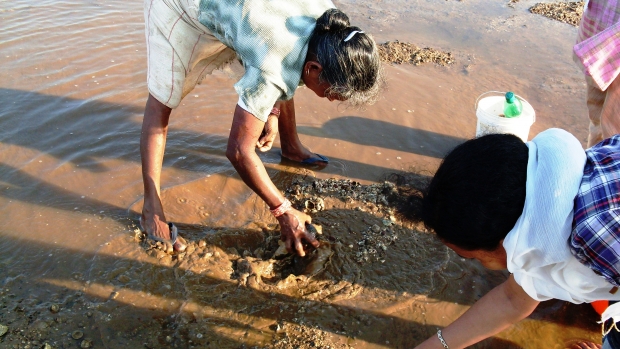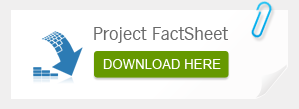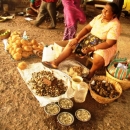Grants :: Small Grant Facilities :: Demarcating safe zones for harvesting edible bivalves in mangroves along the Goa Coast by determining trace metal levels
Demarcating safe zones for harvesting edible bivalves in mangroves along the Goa Coast by determining trace metal levels

Locals collecting Papia malabarica, Goa India © NIO, 2008
Objectives
This project is examining bivalve species to determine the presence and levels of trace metals in their tissues. The targeted species include the clam Paphia malabarica and oyster Crassostrea gryphoides, two commercially important species harvested throughout the year by coastal communities for consumption and sale.
The project is determining the relationship between trace metal levels and other environmental conditions, and is investigating ways of reducing metal contamination. It is also educating local communities, particularly the women who harvest bivalves, of the risks from contamination, and is disseminating its findings to law enforcement agencies to help them protect the health of people at all levels of the bivalve fishery.
Background
Goa’s Central Coast Region has an estimated 20 km² of mangrove forests, an ideal habitat for bivalves that are not only commercially valuable but also a major source of food for poorer coastal communities. The waterways in and around Goa are seriously threatened by pollution from a flourishing mining sector which is helping to drive the state’s economic growth. Mining is supported and encouraged by the region’s many navigable rivers, which facilitate the transport of manganese and iron ores. A resulting problem, however, is heavy metal seepage into the waterways, exacerbated by the discharge of urban waste and wastewater from Goa.
In view of the importance of bivalves to the people of Goa and its surrounds, this project was launched to assess the current scale and nature of metal contamination of waterways. A priority was to monitor the health of both the local ecology and the marine products consumed and sold locally.
Target beneficiaries
Local fishing communities (especially women, the main bivalve collectors) and bivalve consumers in the Goa region.
Outputs
- Determination of trace metal concentrations in bivalve species exploited by local communities in the mangrove habitats of Goa.
- Reporting on metal concentrations in commercially important edible bivalves, with a view to influencing strategies for monitoring contamination of clam and oyster beds, thus protecting human and ecological health.
- Identification of high-risk zones with high levels of metal contamination, and bringing these to the attention of the relevant authorities.
Accomplishments and challenges
Recent reports have highlighted concerns about dangerous levels of pollution, underscoring the urgency of studies such as this one. Increasing metal contamination of mangrove bivalves poses severe environmental and human health risks.
This study offers scope for replicating metal contamination analyses in a range of aquatic species in similarly affected areas, as well as the potential for stimulating action at regional and national levels to reduce and mitigate the introduction of hazardous contaminants into the marine environment.
Challenges
Collecting samples presents challenges, particularly with oysters which require a special technique to lever them out of their substrate while leaving both shells intact. Also, during the rainy season oyster and clam beds tend to remain submerged under high water levels. In such conditions, local people have to be paid to dive and randomly collect samples for analysis.
Another major challenge facing the team is the reluctance of local people to cooperate because of fears that the project might prevent them from collecting bivalves in the area.
Contributions to cross-cutting themes
Gender equality
Most bivalve collectors in area are local women. By addressing contamination, the project is helping to sustain their livelihoods and their health.
Lessons Learned
The assistance and guidance given by MFF to project design, such as what statistical analyses to use, and how and what socio-economic data should be gathered, has been extremely helpful and should be sought in future projects of this nature.
Lastly communication with local communities is important to enrich the project through their inputs. For university field researchers this may not come easily.
Project Facts
Country
Location
Central West Coast, Goa, India
Topic
Duration
22nd Feb 2010 to 31st Oct 2011
MFF Grant Amount
US$12,000
Implementing Partner
Dr T. G. Jagtap
National Institute of Oceanography (NIO),
Dona Paula, Goa 403 044, India
Email: tanaji@nio.org


